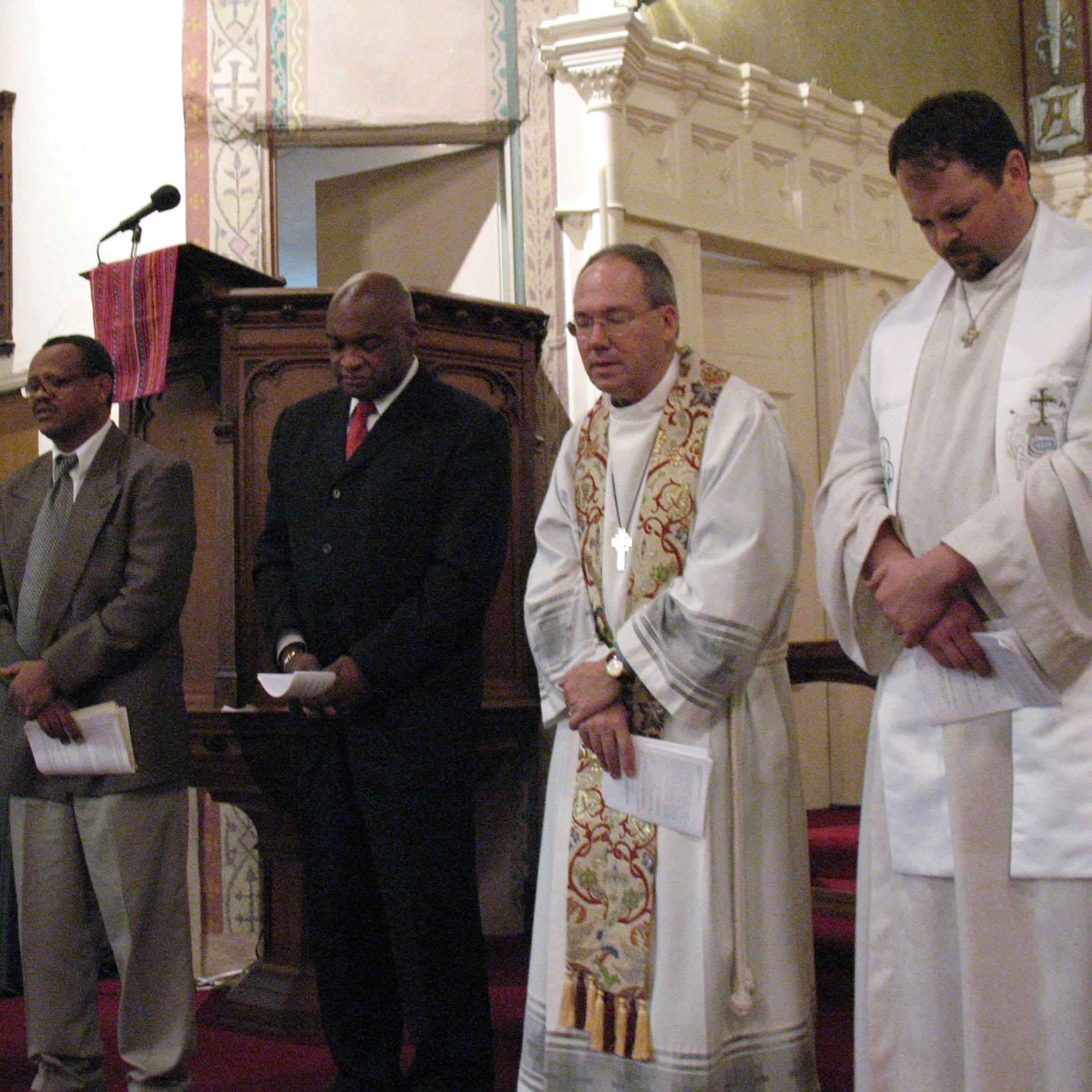 Members of the Protestant, Orthodox, Roman Catholic, and Mormon churches all call themselves Christians—yet they also maintain theologies and practices that diverge in significant ways. Ecumenical organizations such as the World Council of Churches and the National Association of Evangelicals attempt to bridge those differences, although such efforts remain controversial.
Members of the Protestant, Orthodox, Roman Catholic, and Mormon churches all call themselves Christians—yet they also maintain theologies and practices that diverge in significant ways. Ecumenical organizations such as the World Council of Churches and the National Association of Evangelicals attempt to bridge those differences, although such efforts remain controversial.
View full album
What does it mean to speak of the “church”? Is there one church or are there many? On the face of it, there are hundreds of Christian denominations and hundreds of thousands of Christian churches in the United States alone. A Google search for churches in any given community will reveal the diversity and even the divisions of Christianity. Hundreds of small energetic congregations, with little more than a bulldozer and a construction crew, have built new churches. But what is their relationship to other churches in their city, to other churches in the United States, and to other Christians throughout the world? Can a local church be Christian all by itself, or are the churches with all their differences called by Christ to seek one another and work toward collective unity? These are the questions that are raised by the ecumenical movement.
According to Christian tradition, Saint Paul understood the church to be the “body of Christ.” In a letter to the church at Corinth, Paul wrote: “As in one body, there are many members, not all having the same functions, so there are many members of the body of Christ—we are one body, individually members one of another” (Romans 12:4-5). Within this theological perspective, individual Christian congregations might be seen as the “church” not in isolation but only in relationship to the worldwide body of Christ, with all its diversity of members.
The word “ecumenical” comes from the Greek word “oikoumene,” meaning “the whole inhabited earth.” From the beginning, Christianity was not one unified institution, but rather a collection of communities in disparate places, each with its own varying set of beliefs, practices, and identities. The early church held seven ecumenical councils from the 4th to the 7th centuries at which key doctrinal issues, such as the understanding of Christ and the Trinity, were discussed and settled, solidifying for a time some unity within the church. Soon, however, splits and schisms surfaced and became the new reality: Orthodox and Catholics split; Protestants separated from the Catholics; denominations proliferated and divided. In the early 21st century, the word “ecumenical” is used once again by Christians to refer to the worldwide church and the movement toward Christian unity. This unity is not only a matter of structures, institutions, and denominations, but also a unity of spirit and faith.
The primary instrument of the ecumenical movement is the World Council of Churches, which now includes more than 350 Protestant and Orthodox churches from every continent. The Council does not seek to become a “super-church,” but rather a “fellowship of churches,” a forum for exploring and expressing the common faith of the church in witness and in service. Through the WCC, Christians in the United States, for example, are linked in communication, prayer, and action with Christians in South Africa or Sri Lanka. While the Roman Catholic Church is not a member of the WCC, it works actively with the Council through the Pontifical Council for Promoting Christian Unity and through a long-standing Joint Working Group of the WCC and the Vatican.
There is disagreement among American Christians about the value of Christian ecumenism. Some American Christians, especially those from independent churches, are deeply suspicious of the consolidation of power and dilution of theology they see represented by the ecumenical initiatives. Those who support the movement, however, insist that Christian faith requires dialogue and deepening relationships among the various parts of the Christian family, even where they may profoundly disagree with one another.
Within the United States, the ecumenical witness of churches is expressed in many ways. At the state and local levels, America has a multitude of church councils that embody an ecumenical vision of cooperation. At the national level, the National Council of Churches of Christ (NCC) brings a wide range of churches together for mission and education; for ministries of service and relief through Church World Service; for active engagement with the issues of racial, economic, and social justice; and for theological reflection on divisive doctrinal issues. While it is often identified with theological liberalism, the NCC has sustained a dialogue among a wide spectrum of Protestant and Orthodox churches—liberal and conservative alike—that have pledged “to manifest ever more fully the unity of the Church.”
Similarly, the National Association of Evangelicals (NAE) provides evangelical churches and individuals a space to bring a strong biblical and moral voice to bear on today’s issues. While its leadership had long been predominantly white, the NAE has deliberately moved to broaden its membership and leadership and become more ethnically and racially inclusive. Evangelicals also have raised a passionate voice on behalf of global Christian concerns, especially in response to the persecution of Christians in some parts of the world.
Today, American Christianity is becoming increasingly diverse. Christians from a multitude of ethnic and cultural backgrounds are part of cities and towns across America. Korean Presbyterians and Tanzanian Lutherans now make their home alongside Irish and Italian Catholics, Russian and Greek Orthodox Christians, and Latino Southern Baptists and Pentecostals. Making concrete an ecumenical vision of Christianity that seeks community across the lines of culture, race, and denomination is now a challenge for American Christians not only at the global level, but at the local level as well.